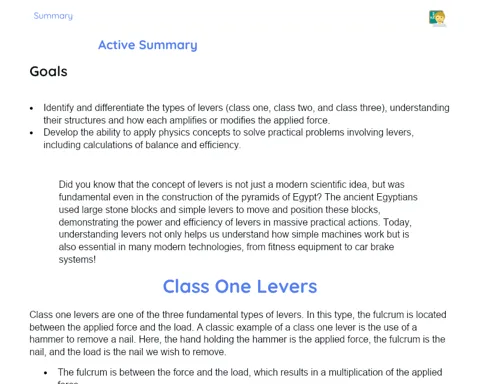Dynamics: Traction Force | Active Summary
Objectives
1. Understand the nature and calculation of tensile force, identifying the elements that influence it, such as cables, ropes, and chains.
2. Develop skills to apply tensile force calculations in real situations and theoretical problems, increasing the ability to solve practical challenges using physical concepts.
Contextualization
Did you know that tensile force is not just a theoretical concept, but something that directly affects our daily lives? For example, at an amusement park, when you are on a roller coaster and the car is pulled up before plummeting at high speed, the tensile force in the steel cable is what keeps you safe! This force is also crucial in sports like climbing, where the safety of climbers entirely depends on the strength of the cables and ropes supporting them. Understanding this concept is not just academic, but an essential skill for engineers, athletes, and anyone who needs to deal with situations where safety and movement are fundamental.
Important Topics
Tensile Force
Tensile force is the force exerted by a cable, rope, chain, or any object under tension. It acts to draw an object towards the point of origin of the force and is essential to understand lifting mechanisms, such as elevators and cranes, as well as sports like climbing and bungee jumping.
-
The direction of the tensile force is always along the cable or rope, and its magnitude depends on the tension applied.
-
In the absence of friction, the tensile force is equal on both sides of the cable, ensuring that tension is uniform.
-
Tensile force is crucial in mechanical systems where movement is desired or necessary, serving as the agent that drives movement.
Calculation of Tensile Force
Calculating tensile force involves considering factors such as the weight of the object, the acceleration of the object, and the force of friction. These calculations are fundamental in practical situations, such as in the design of safety systems at heights or when determining the load capacity of a lifting system.
-
The tensile force required to move an object is directly proportional to its mass and the imposed acceleration.
-
In real systems, the force of friction can reduce the effective tensile force, which must be taken into account in calculations.
-
Calculating tensile force allows for the proper sizing of mechanical components and structures to ensure safety and efficiency.
Practical Applications of Tensile Force
Tensile force is applied in various everyday situations, from operating industrial machines to leisure activities like adventure sports. Understanding these applications helps visualize the importance and necessity of accurate tensile force calculations in real contexts.
-
In gym equipment, such as cable machines, tensile force is used to provide variable resistance during exercise.
-
In civil engineering, tensile force is fundamental in the use of cranes and hoists to safely and effectively move heavy materials.
-
In safety systems, such as climbing harnesses, the tensile force of cables and ropes must be calculated to ensure the safety of users in extreme situations.
Key Terms
-
Tensile Force: Force exerted by a cable, rope, or chain that is under tension.
-
Tension: The state of stretching or extension of a material subjected to a force, such as tensile force.
-
Frictional Force: The force that opposes the relative motion of two bodies in contact, which can reduce the effective tensile force.
To Reflect
-
How can tensile force be adjusted for different applications, such as in sports or engineering?
-
Why is it important to consider friction when calculating tensile force in mechanical systems?
-
In what ways can understanding tensile force improve safety in adventure activities and in industry?
Important Conclusions
-
We explored tensile force, understanding its definition, calculations, and practical applications, from engineering to sports.
-
We highlighted how tensile force is crucial in situations like elevators, adventure sports, and even in structural design, showing its importance in daily life.
-
We discussed the relevance of considering factors such as weight, acceleration, and friction when calculating tensile force, preparing you to solve real and theoretical physics problems.
To Exercise Knowledge
- Calculate the tensile force needed to move an object weighing 100 kg with an acceleration of 2 m/s². 2. Design and build a small table elevator using rope and a bucket, calculating the necessary tensile force. 3. Simulate a rescue situation on a mountain using action figures, calculating the tensile force needed to lift the weight.
Challenge
Spaghetti Crane Challenge: Using spaghetti and glue, build a crane that can lift a weight of at least 500g. Calculate the tensile force that your crane must support and test it!
Study Tips
-
Review tensile force calculations with different scenarios and practice with various problems to strengthen your understanding.
-
Watch engineering videos showing the application of tensile force in large projects to visualize its practical importance.
-
Discuss with your peers the application of tensile force in sports or hobbies involving ropes and cables to better understand its role in the real world.



